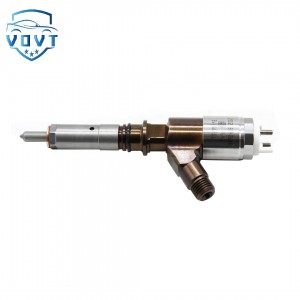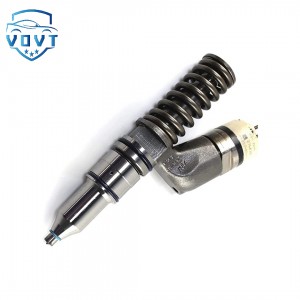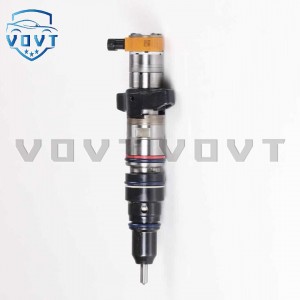New High Quality Diesel Injector 557-7633 557-7634 557-7637 20R-8068 201-8062 For CAT C9
Products Description
| Reference. Codes | C9 |
| Application | C9 |
| MOQ | 4PCS |
| Certification | ISO9001 |
| Place of Origin | China |
| Packaging | Neutral packing |
| Quality Control | 100% tested before shipment |
| Lead time | 7~10 working days |
| Payment | T/T, L/C, Paypal, Western Union, MoneyGram or as your requirement |
What are the common faults of automobile fuel injectors?
Injector nozzle clogging: This is one of the most common faults of the injector. Impurities, colloids, carbon deposits and other substances in the fuel will gradually accumulate at the injector nozzle, causing the injection hole to become smaller or even clogged. Injector nozzle clogging will cause uneven fuel injection and poor atomization effect, which will affect the combustion efficiency of the engine, causing the engine to shake, poor acceleration, unstable idling, increased fuel consumption and other problems.
Too much or too little injection: The injection amount of the injector is controlled by the solenoid valve inside it. If the solenoid valve fails, such as valve core stuck, coil short circuit or open circuit, the injector will not be able to accurately control the injection amount according to the instructions of the engine control unit. Too much injection will make the mixture too rich, causing problems such as black smoke from the engine, increased fuel consumption, and carbon deposits on the spark plug; too little injection will make the mixture too thin, causing insufficient engine power, weak acceleration, easy flameout and other faults.
Inaccurate injection timing: The injection timing of the injector is crucial to the normal operation of the engine. If the control circuit of the injector fails, or there is a problem with the injection control program of the engine control unit, the injection time will be inaccurate. Injection time that is too early or too late will affect the combustion process of the engine, causing problems such as engine knock, power reduction, and excessive emissions.
Injector leakage: Injector leakage is generally caused by aging, damage to the seal of the injector nozzle, or cracks in the injector itself. Injector leakage will cause fuel to drip into the combustion chamber or intake duct when it is not needed, causing problems such as too rich mixture, failure to start the engine, or severe shaking after starting. In addition, injector leakage will also cause fuel waste, increase fuel consumption, and may cause safety hazards such as fire.
Injector stuck: Mechanical parts inside the injector, such as needle valves, may be worn, deformed, or affected by impurities due to long-term use, causing the needle valve to be stuck in the open or closed position. If the needle valve is stuck in the open position, the fuel will continue to be sprayed, making the mixture too rich and the engine unable to work properly; if the needle valve is stuck in the closed position, the cylinder will not be able to spray fuel, resulting in the engine missing cylinders, severe jitter and power reduction.
Solenoid coil failure: The solenoid coil of the injector is a key component to control the operation of the injector. If the solenoid coil has a short circuit, open circuit or insulation damage, the injector will not be able to receive the control signal of the engine control unit normally, resulting in the injector not working or working abnormally. Solenoid coil failure may be caused by aging, overheating due to long-term use, or external electromagnetic interference.
























